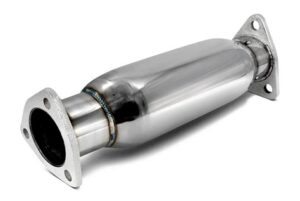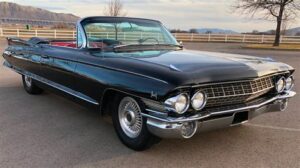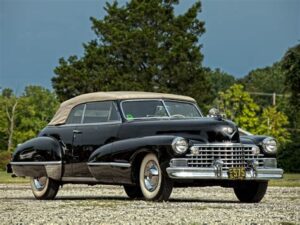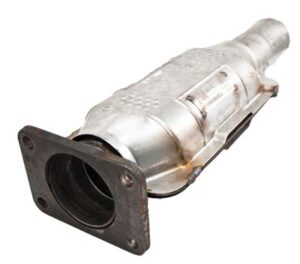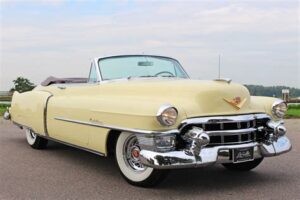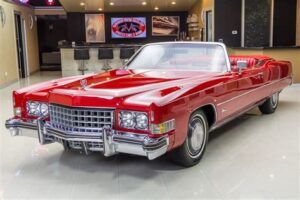Are you looking to enhance your Honda’s performance while contributing to a cleaner environment? The Cadillac converter is a crucial component of your vehicle’s exhaust system, playing a vital role in reducing harmful emissions. In this article, we will dive deep into understanding the Cadillac converter specifically designed for Honda vehicles. From its importance in improving emissions to tips on choosing the right converter and installation advice, we’ve got you covered. We’ll also address common issues faced with Cadillac converters in various Honda models and answer frequently asked questions to ensure you make informed decisions. Join us as we explore how the right Cadillac converter can enhance your Honda’s efficiency, longevity, and environmental impact.
Understanding The Cadillac Converter For Honda Vehicles
The cadillac converter is an essential component of emission control systems in Honda vehicles, as it plays a critical role in reducing harmful pollutants released into the environment. This device transforms harmful gases produced during combustion into less harmful emissions before they exit the exhaust system. For Honda owners, comprehending the functionality and importance of the cadillac converter can significantly influence vehicle performance and environmental impact.
Honda models are engineered with specific emissions standards in mind, making the design of their cadillac converters integral to overall vehicle efficiency. Typically made from precious metals like platinum, palladium, and rhodium, these converters facilitate chemical reactions that convert carbon monoxide, nitrogen oxides, and unburned hydrocarbons into carbon dioxide and nitrogen, which are far less harmful.
In addition to serving as a catalyst for emission reduction, a well-maintained cadillac converter can enhance engine performance. When this component is functioning optimally, it allows for smooth exhaust flow, resulting in improved fuel efficiency and better horsepower. Therefore, ensuring the health of the cadillac converter not only helps in complying with environmental regulations but also contributes positively to the vehicle’s overall performance metrics.
Frequent checks and understanding the signs of a failing cadillac converter—such as reduced fuel efficiency, peculiar noises, or illuminated warning lights—can help owners maintain their Hondas effectively. Awareness of these aspects plays a vital role in extending the lifespan of the cadillac converter and ensuring that emissions stay within regulated limits. In conclusion, for Honda drivers, grasping the significance of the cadillac converter is crucial for both environmental and vehicular health.
How The Cadillac Converter Improves Honda Emissions
The cadillac converter plays a critical role in reducing harmful emissions produced by Honda vehicles. By converting exhaust gases into less harmful substances, this essential component aids in compliance with environmental regulations. Here’s how it contributes to improved emissions:
1. Chemical Reaction: The cadillac converter utilizes a chemical reaction that transforms pollutants such as hydrocarbons (HC), carbon monoxide (CO), and nitrogen oxides (NOx) into harmless gases like carbon dioxide (CO2) and nitrogen (N2). This process is facilitated by the catalyst materials, often composed of precious metals like platinum, palladium, and rhodium.
2. Reduction of Greenhouse Gases: By efficiently converting harmful gases, the cadillac converter helps to minimize the overall greenhouse gas emissions from Honda vehicles. This is crucial for meeting stringent emission standards set by various regulatory bodies worldwide.
3. Enhanced Fuel Efficiency: A properly functioning cadillac converter ensures that the engine operates more efficiently. When the emissions system works optimally, it can lead to better fuel economy, which not only saves money for drivers but also reduces the total emissions produced by the vehicle.
4. Longer Component Lifespan: Regular maintenance of the cadillac converter helps maintain its efficiency over time. A well-maintained emissions system contributes to reduced wear and tear on the engine and exhaust components, decreasing the likelihood of excessive emissions due to component failure.
5. Environmental Impact: The collective effect of improved emissions from Honda vehicles equipped with functioning cadillac converters significantly lowers the overall air pollution levels. This is vital for urban areas where air quality is a major concern.
By understanding how the cadillac converter works to improve emissions, Honda owners can appreciate the importance of this component in their vehicles for both environmental and performance reasons.
Choosing The Right Cadillac Converter For Your Honda
Selecting the appropriate cadillac converter for your Honda is crucial for maintaining optimal performance and compliance with emissions standards. Here are some key considerations to guide your choice:
- Vehicle Compatibility: Ensure that the cadillac converter you select is designed specifically for your Honda model and year. Not all converters fit all vehicles, so refer to the manufacturer’s specifications or consult an expert.
- Type of Converter: There are typically two types of cadillac converters: OEM (Original Equipment Manufacturer) and aftermarket. OEM converters are made by the vehicle’s manufacturer and tend to offer superior quality and fit. Aftermarket converters may vary in quality, so it’s important to read reviews and choose a reputable brand.
- Material and Construction: Look for converters made from durable materials such as stainless steel, which offer better longevity and resistance to corrosion. The internal structure should also be designed for efficient gas flow to improve overall engine performance.
- Emissions Standards: Ensure that the converter meets local emissions regulations. Using a cadillac converter that does not comply can result in fines and will negatively affect your vehicle’s performance.
- Warranty and Support: Choosing a cadillac converter that comes with a warranty can provide additional peace of mind. Check customer support options as well in case you encounter issues post-purchase.
By considering these factors when choosing a cadillac converter for your Honda, you can enhance your vehicle’s efficiency, extend its lifespan, and ensure compliance with environmental regulations.
Installation Tips For A New Cadillac Converter On Honda
When it comes to replacing the cadillac converter on your Honda, proper installation is crucial to ensure optimal performance and compliance with emissions standards. Here are some essential tips to follow during the installation process:
- Gather Necessary Tools and Materials: Before you start, make sure you have all the required tools such as a socket set, wrenches, an exhaust hanger tool, and safety equipment. Additionally, have the new cadillac converter ready.
- Check Compatibility: Verify that the cadillac converter you purchased is compatible with your specific Honda model. Refer to your vehicle’s manual for exact specifications.
- Safety First: Ensure your vehicle is parked on a flat surface, and use jack stands if needed to prevent any accidents. Always wear safety glasses and gloves during installation.
- Disconnect the Battery: Disconnect the negative terminal of your car battery to prevent any electrical issues while you work on the exhaust system.
- Remove Old Cadillac Converter: Carefully unbolt the old cadillac converter from the exhaust system. Be patient as rust and corrosion may make it difficult to remove.
- Inspect Exhaust Components: While you have the converter out, check other exhaust components for wear or damage, and replace them if necessary.
- Install New Cadillac Converter: Position the new cadillac converter and secure it in place. Make sure all bolts are tightened to the recommended torque specifications.
- Reconnect the Battery: Once installation is complete, reconnect the negative battery terminal. Double-check everything is in place and secure.
- Run the Vehicle: Start your Honda and let it run for a few minutes. Listen for any unusual noises and check for leaks. If everything sounds and looks good, your installation is successful.
- Consult a Professional: If you’re unsure about any step in the installation process, it’s always best to consult with a professional mechanic to avoid potential issues.
By following these tips, you ensure that your new cadillac converter is properly installed, contributing to the overall performance and efficiency of your Honda vehicle.
Common Issues With Cadillac Converters In Honda Models
The cadillac converter plays a crucial role in the overall performance of Honda vehicles, but it can also face various issues over time. Here are some common problems that Honda owners should be aware of:
- Clogging: Over time, the cadillac converter can become clogged with carbon deposits and other contaminants, leading to reduced engine performance and efficiency.
- Overheating: If the converter becomes overheated, it can damage the internal components and cause a failure. This often results from engine misfires or an incorrect air-fuel mixture.
- Physical Damage: Road debris and accidental impact can cause physical damage to the cadillac converter. Such damage can lead to exhaust leaks or complete failure.
- Oxygen Sensor Failure: The oxygen sensors that monitor the efficiency of the cadillac converter can fail, causing the check engine light to illuminate and signaling potential issues with the emissions system.
- Corrosion: Exposure to moisture, road salt, and chemicals can lead to rust and corrosion of the cadillac converter, eventually resulting in holes and exhaust leaks.
To avoid these issues, regular maintenance and timely inspections of the exhaust system are essential. Addressing any signs of trouble early can prolong the life of the cadillac converter and ensure optimal performance of your Honda vehicle.
Frequently Asked Questions
What is a catalytic converter and why is it important in a Honda?
A catalytic converter is an essential component of a vehicle’s exhaust system that converts harmful gases into less harmful emissions. In a Honda, it helps to reduce pollutants and meet environmental regulations.
How do I know if my Honda’s catalytic converter is failing?
Signs of a failing catalytic converter include a check engine light, poor acceleration, reduced fuel efficiency, and unusual noises from the exhaust. If you experience any of these issues, it’s advisable to have your vehicle inspected.
What are common causes of catalytic converter failure in Hondas?
Common causes include engine misfires, oil leaks, and excessive fuel consumption, which can lead to overheating of the catalytic converter and deterioration of its components.
Can a clogged catalytic converter affect my Honda’s performance?
Yes, a clogged catalytic converter can significantly affect your Honda’s performance by causing reduced engine power, poor acceleration, and increased emissions, making it crucial to address the issue promptly.
Is it legal to remove or replace the catalytic converter on my Honda?
In most places, it is illegal to remove the catalytic converter as it is required to meet emissions standards. However, if you need to replace it, ensure you use a suitable aftermarket or OEM replacement that complies with regulations.
How much does it typically cost to replace a catalytic converter in a Honda?
The cost of replacing a catalytic converter in a Honda can range from $500 to $2,500, depending on the model and whether you choose an original equipment manufacturer (OEM) or aftermarket part.
What maintenance can I perform to prolong the life of my Honda’s catalytic converter?
To prolong the life of your catalytic converter, maintain your engine by regularly checking for leaks, ensuring proper engine tuning, using the correct fuel, and addressing check engine light warnings promptly.
